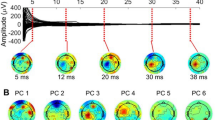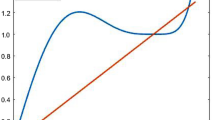Abstract
Prewhitening is a standard step for the processing of noisy signals. Typically, eigenvalue decomposition (EVD) of the sample data covariance matrix is used to calculate the whitening matrix. From a computational point of view, an important problem here is to reduce the complexity of the EVD of the complex-valued sample data covariance matrix. In this paper, we show that the computational complexity of the prewhitening step for complex-valued signals can be reduced approximately by a factor of four when the real-valued EVD is used instead of the complex-valued one. Such complexity reduction can be achieved for any axis-symmetric array. The performance of the proposed procedure is studied in application to a blind source separation (BSS) problem. For this application, the performance of the proposed prewhitening scheme is illustrated by means of simulations, and compared with the conventional prewhitening scheme. Among a number of BSS methods which use prewhitening, the second-order blind identification procedure has been adopted in this paper.
Similar content being viewed by others
Author information
Authors and Affiliations
Corresponding author
Rights and permissions
About this article
Cite this article
Vorobyov, S. Blind Unitary Prewhitening with a Real-Valued Eigendecomposition. Circuits Syst Signal Process 25, 421–429 (2006). https://doi.org/10.1007/s00034-005-0427-x
Received:
Issue Date:
DOI: https://doi.org/10.1007/s00034-005-0427-x




